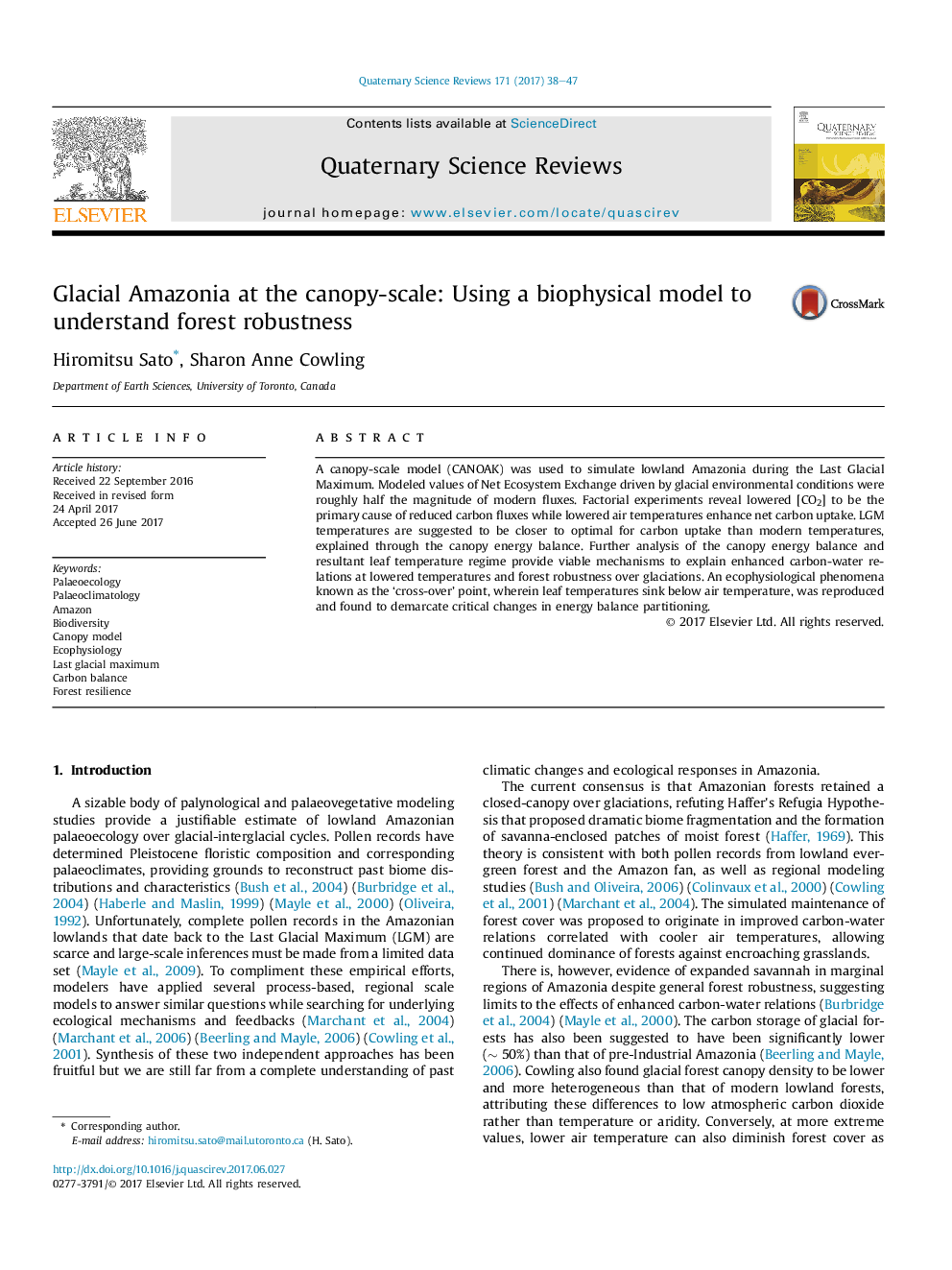| Article ID | Journal | Published Year | Pages | File Type |
|---|---|---|---|---|
| 5786585 | Quaternary Science Reviews | 2017 | 10 Pages |
Abstract
A canopy-scale model (CANOAK) was used to simulate lowland Amazonia during the Last Glacial Maximum. Modeled values of Net Ecosystem Exchange driven by glacial environmental conditions were roughly half the magnitude of modern fluxes. Factorial experiments reveal lowered [CO2] to be the primary cause of reduced carbon fluxes while lowered air temperatures enhance net carbon uptake. LGM temperatures are suggested to be closer to optimal for carbon uptake than modern temperatures, explained through the canopy energy balance. Further analysis of the canopy energy balance and resultant leaf temperature regime provide viable mechanisms to explain enhanced carbon-water relations at lowered temperatures and forest robustness over glaciations. An ecophysiological phenomena known as the 'cross-over' point, wherein leaf temperatures sink below air temperature, was reproduced and found to demarcate critical changes in energy balance partitioning.
Keywords
Related Topics
Physical Sciences and Engineering
Earth and Planetary Sciences
Geology
Authors
Hiromitsu Sato, Sharon Anne Cowling,
